US architecture firm Hybrid designed and built a compact house along a back alley in Seattle that is partially lifted off the ground to make room for parking spaces.
The house is called The Lookout and is on a dense street in the Central District of Seattle. It is located on a narrow, sloping property and faces an alley.
Hybrid has renovated an entire property
Hybrid, a local, multidisciplinary company founded in 2004, was both developer and designer of the project.
The front part of the site consists of three interconnected townhouses, all of which have matching dark cladding. A small lawn with a ripe cherry tree is hidden between these townhouses. The lookout is at the bottom of the site
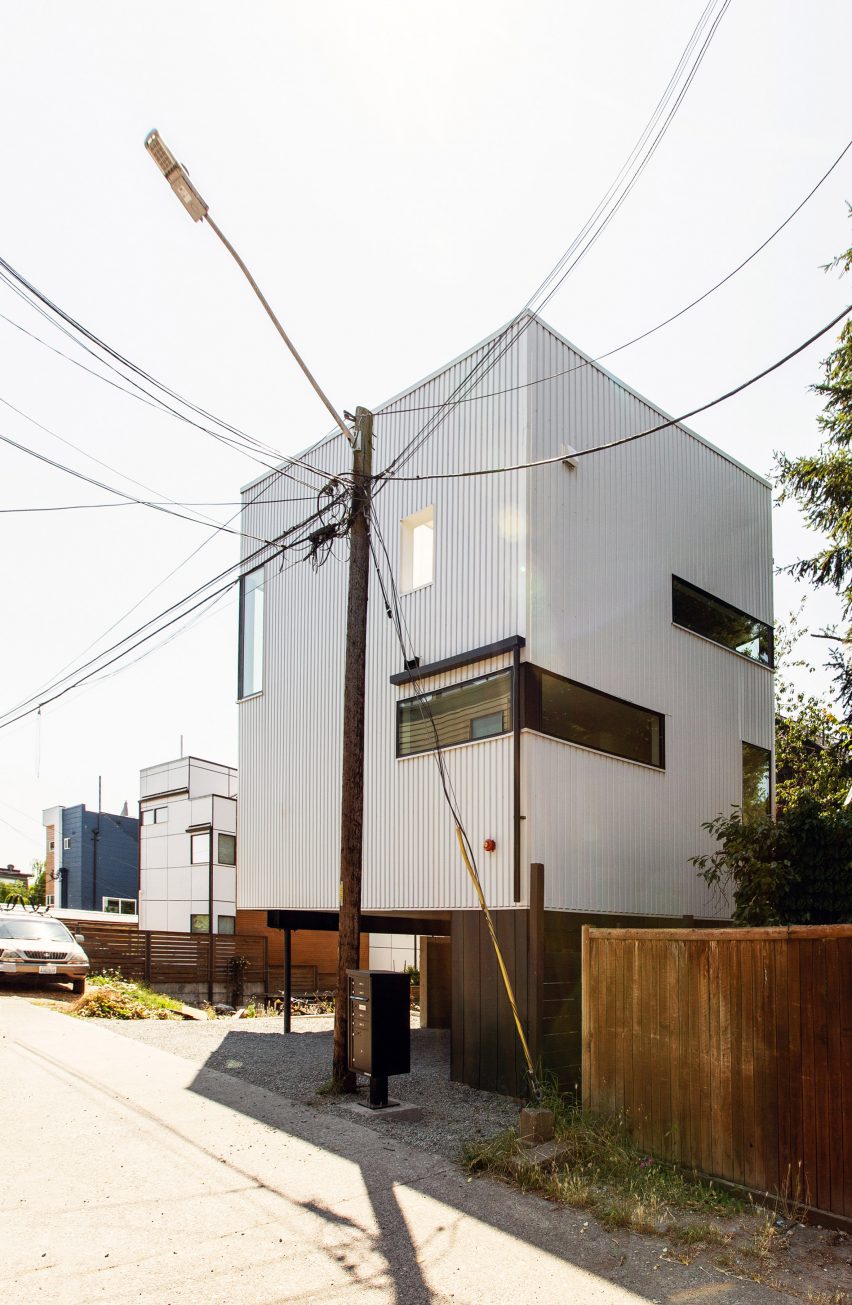 The lookout point will be raised to create a protected parking space
The lookout point will be raised to create a protected parking space
When the company bought the 390-square-foot property, it decided to demolish an existing single-family home and replace it with several apartment buildings, including The Lookout.
Instead of completely filling the site with townhouses, the team decided to build a narrow street apartment in the back of the property.
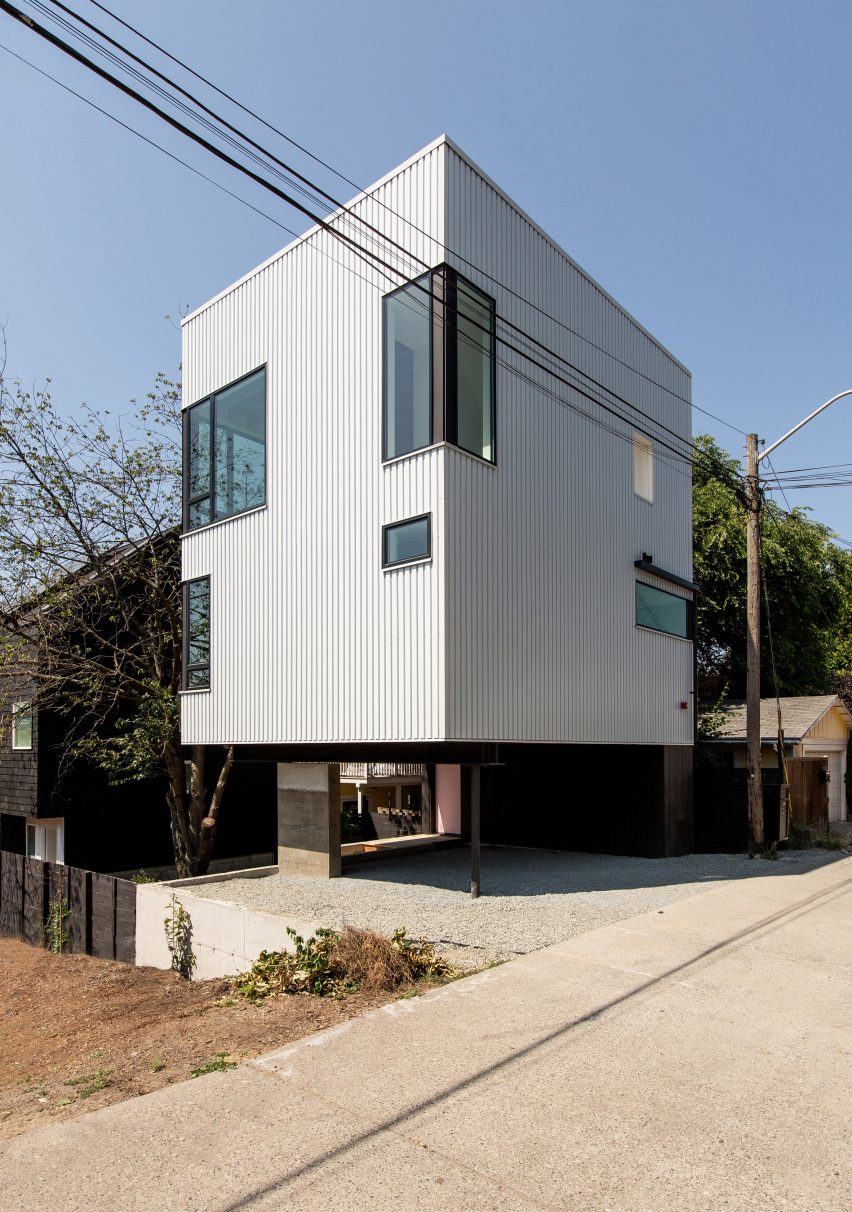 A mixture of concrete and steel columns supports the upper levels
A mixture of concrete and steel columns supports the upper levels
The half-timbered house is lifted above the ground using concrete pillars and a steel pillar to enable parking underneath.
“When you lift the device off the alley, you gain visual and physical access across the site, making it feel bigger than it is,” the team said.
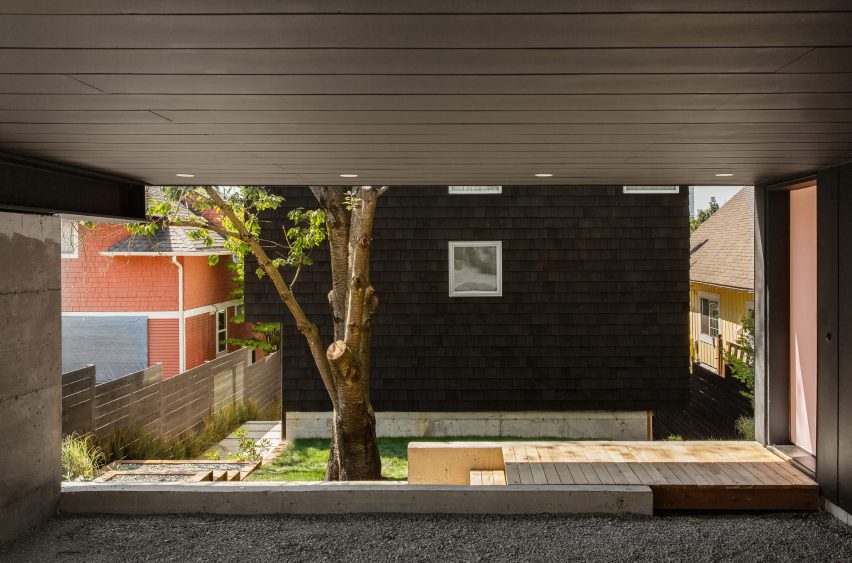 A car can be parked in the slot under the house
A car can be parked in the slot under the house
The rectangular apartment has a rectangular floor plan and exterior walls clad in white metal cladding – a choice inspired by the conditions of the location.
“The strong white siding offers an appealing contrast to the black houses on the site and the incoherent alley area,” said the team.
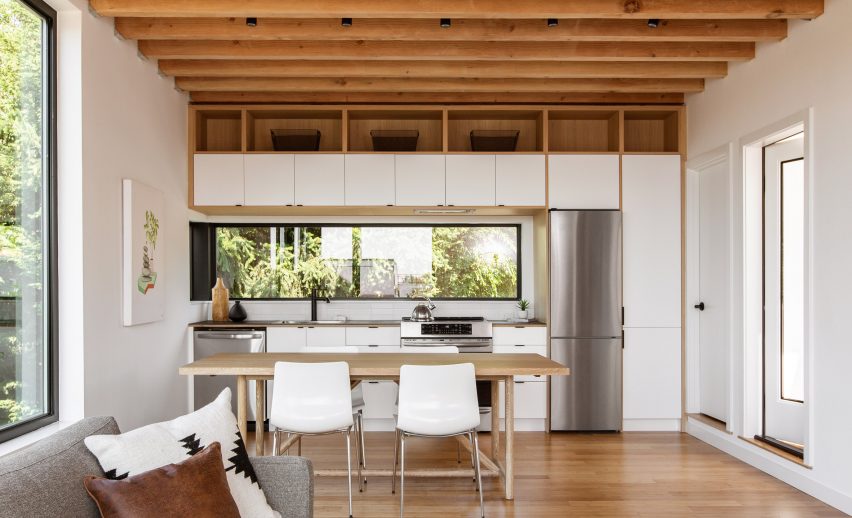 An open living area is on the top floor
An open living area is on the top floor
Inside, the house has an atypical floor plan with the private areas on the first level and the public area above. The apartment covers 97 square meters.
On the first level, a bedroom and an office are separated by a tall wardrobe that rests on felt pads and is designed for IKEA PAX doors. If the homeowner prefers, the cabinet unit can be moved against a wall to create a large space.
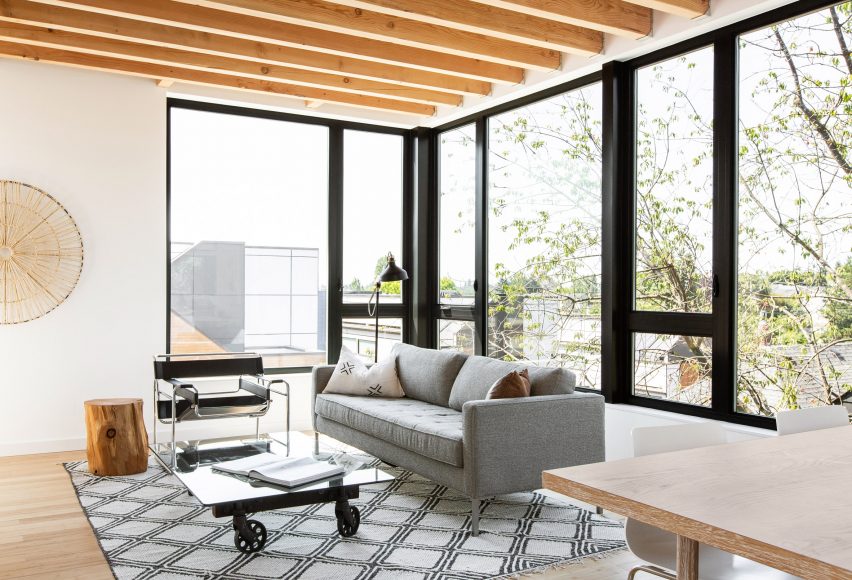 The living area has bamboo floors
The living area has bamboo floors
Other aspects of the home have also been designed with adaptability in mind.
“Flex rooms and moveable wardrobes allow the home to meet changing needs and create a permanent evolution in interior design,” said the team.
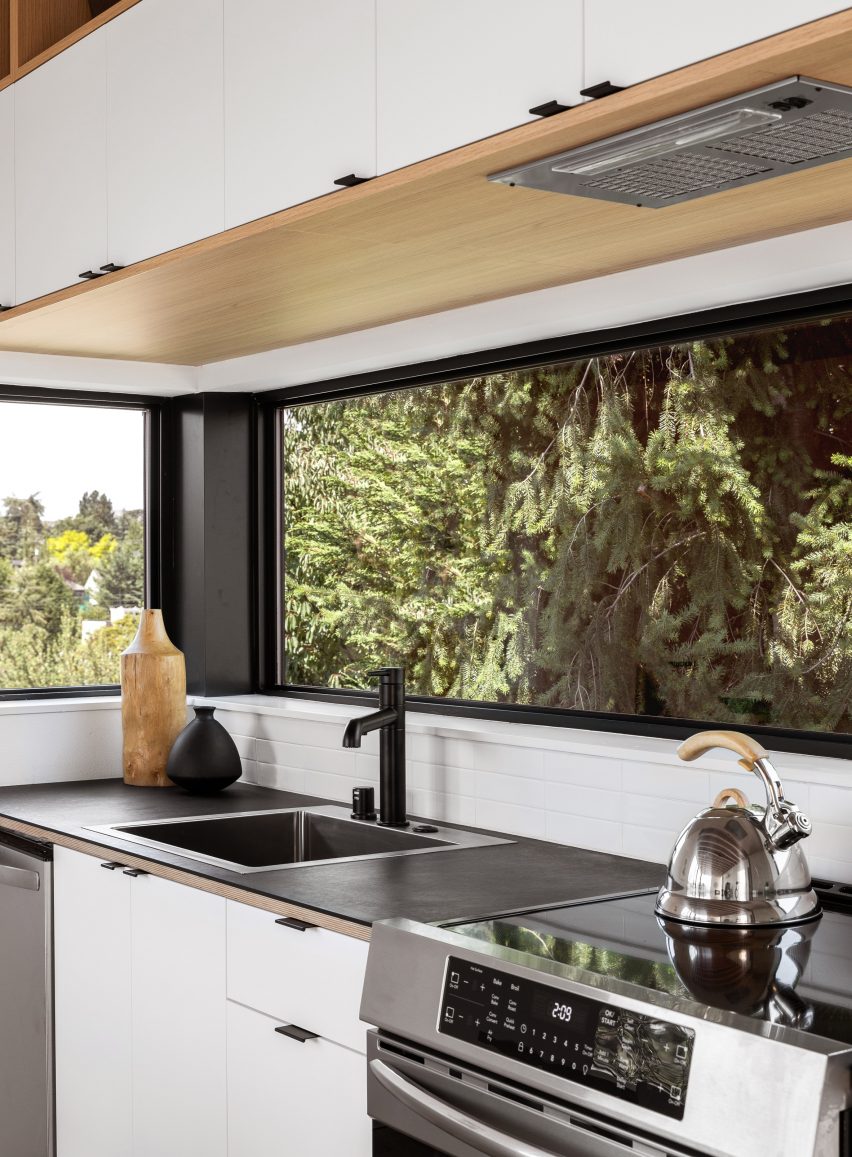 Kitchen surfaces are made of hard-wearing, resin-enriched paper
Kitchen surfaces are made of hard-wearing, resin-enriched paper
A staircase leads to the upper level, where the team has created an open kitchen, dining area and living room. Large windows, some of which are operable, offer a view of neighboring roofs.
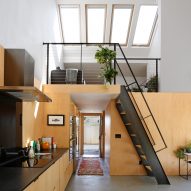
SHED creates an Alley Cat apartment for Seattle’s backyard
“Big windows are a must because natural light brings us comfort, especially on cloudy Seattle days,” said current homeowner Isaiah Torain.
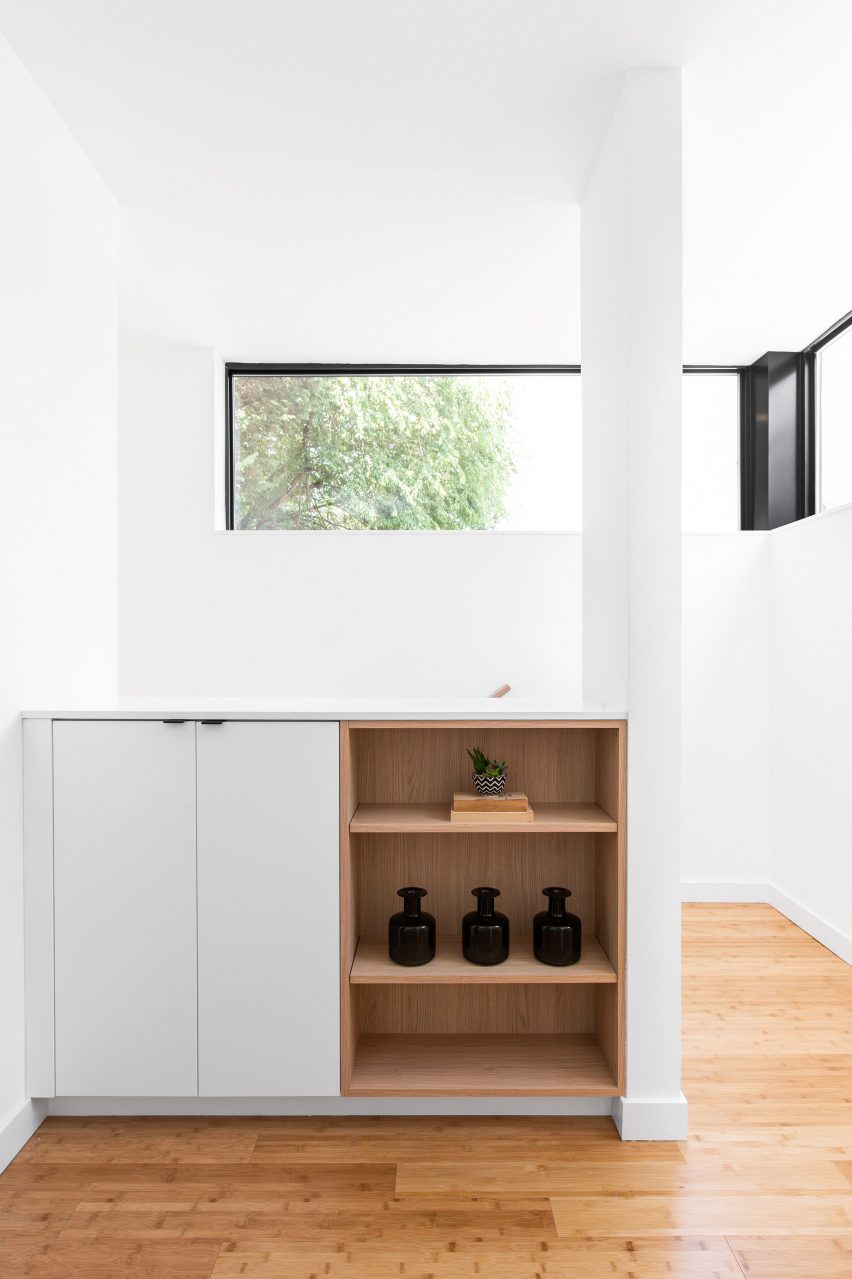 Hybrid maximizes storage space in a compact house
Hybrid maximizes storage space in a compact house
The surfaces of the Lookout are simple and robust. The cooking area is outfitted with flat cabinets and counters covered in Richlite – a durable material made from resin-infused paper.
A living room has white walls, bamboo floors, and exposed ceiling beams. While the house was up for sale, the team filled the space with modern decor in neutral colors, including a gray sofa and a glass coffee table on wheels.
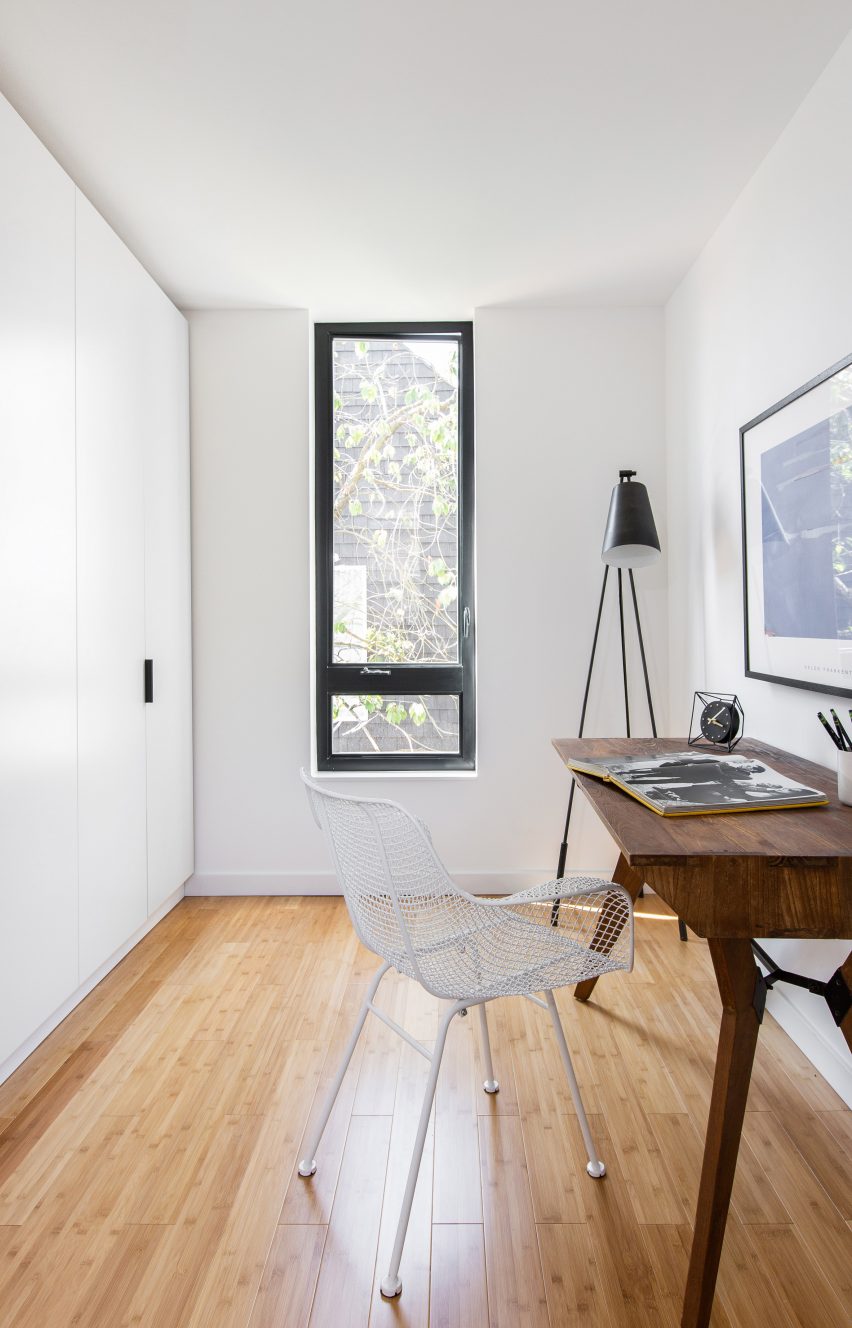 White walls and cabinets reflect the light
White walls and cabinets reflect the light
Overall, the house should “have a lightness and freedom of movement that is not often associated with small rooms,” said the team.
Hybrid also hopes the project will demonstrate an inventive approach to higher density living.
“Some of the most interesting urban solutions can be found in the alley,” the team said, noting that their home adds “funk and character in a normally overlooked context.”
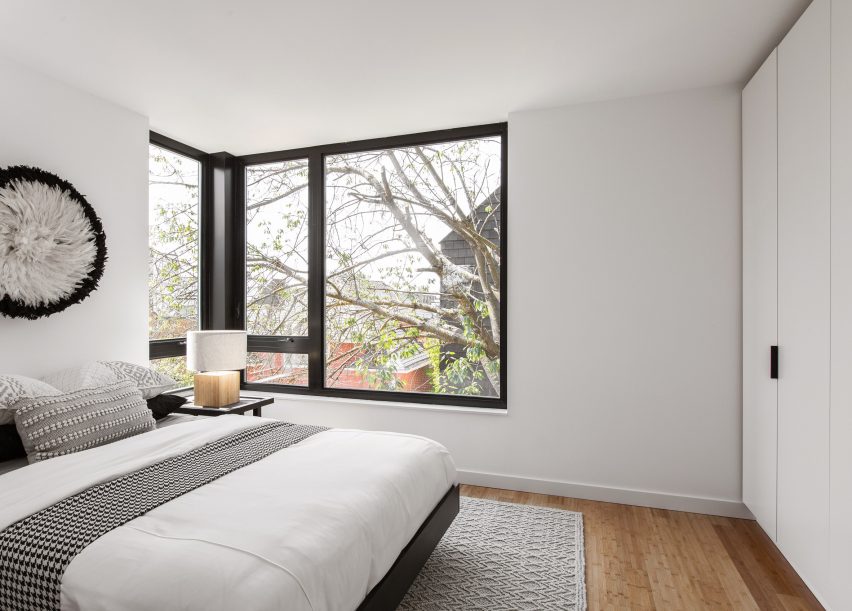 The bedroom is on a lower floor
The bedroom is on a lower floor
Laneway Housing is a typology common across Canada and parts of the American Pacific Northwest. These residences are usually built in a back yard next to an alley.
Other examples include a two-story apartment in Calgary with an alcove and a fire pole, and a two-story Vancouver unit with an angular shape and clapboard.
The photography is by Rafael Soldi.
Project Loans:
Architect / developer: Hybrid
Engineering: Malsam Tsang
Construction: Hybrid assembly







:quality(70)/cloudfront-us-east-1.images.arcpublishing.com/cmg/BPEI2QQ76SHPPOW6X6A6WHEGX4.jpg)


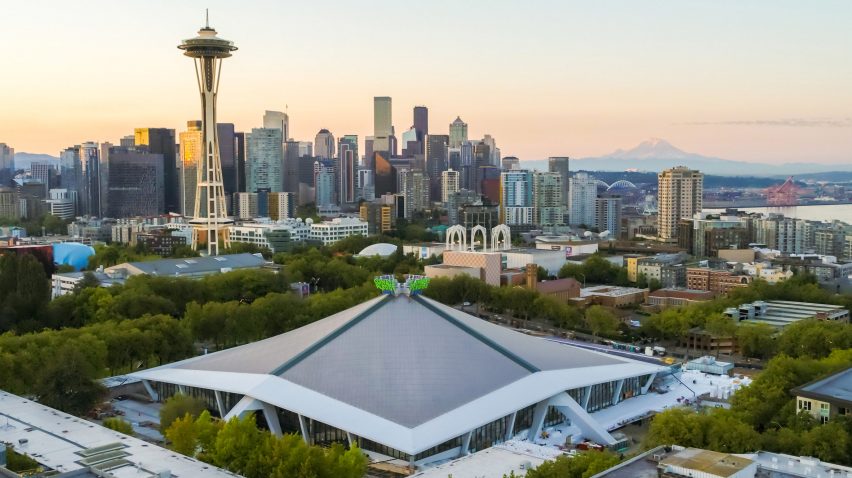

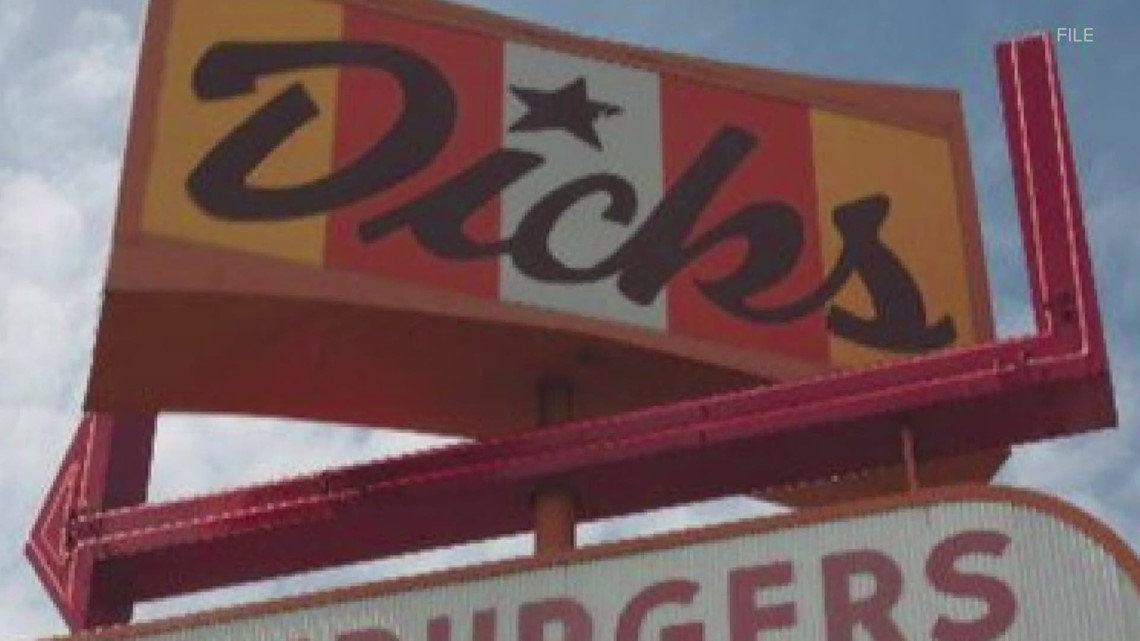
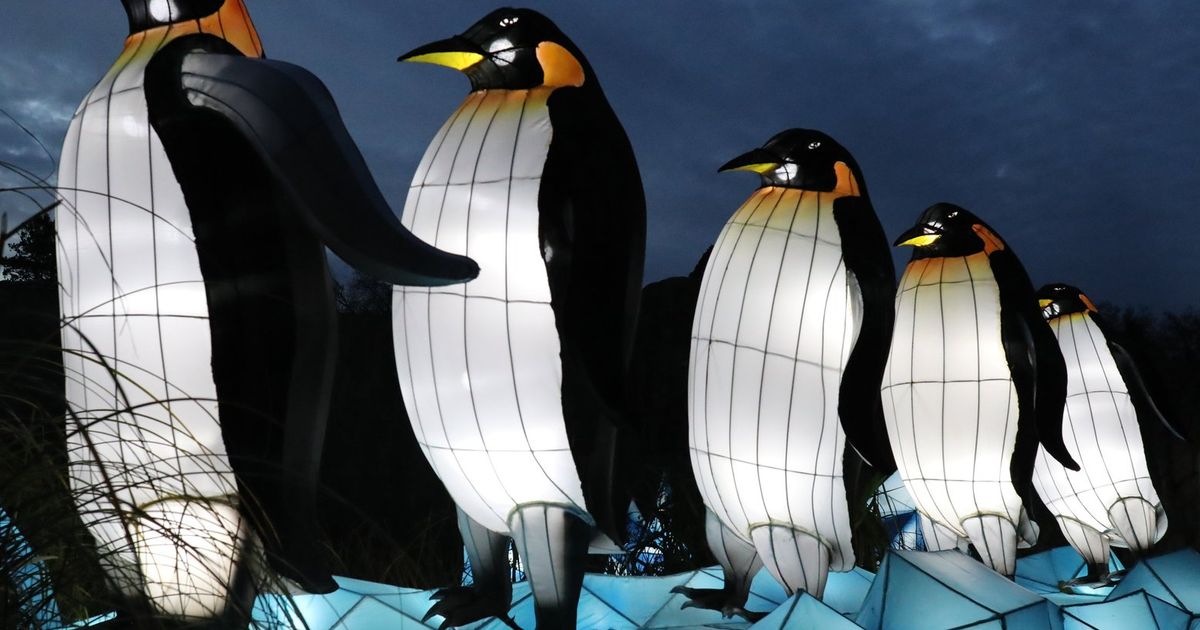







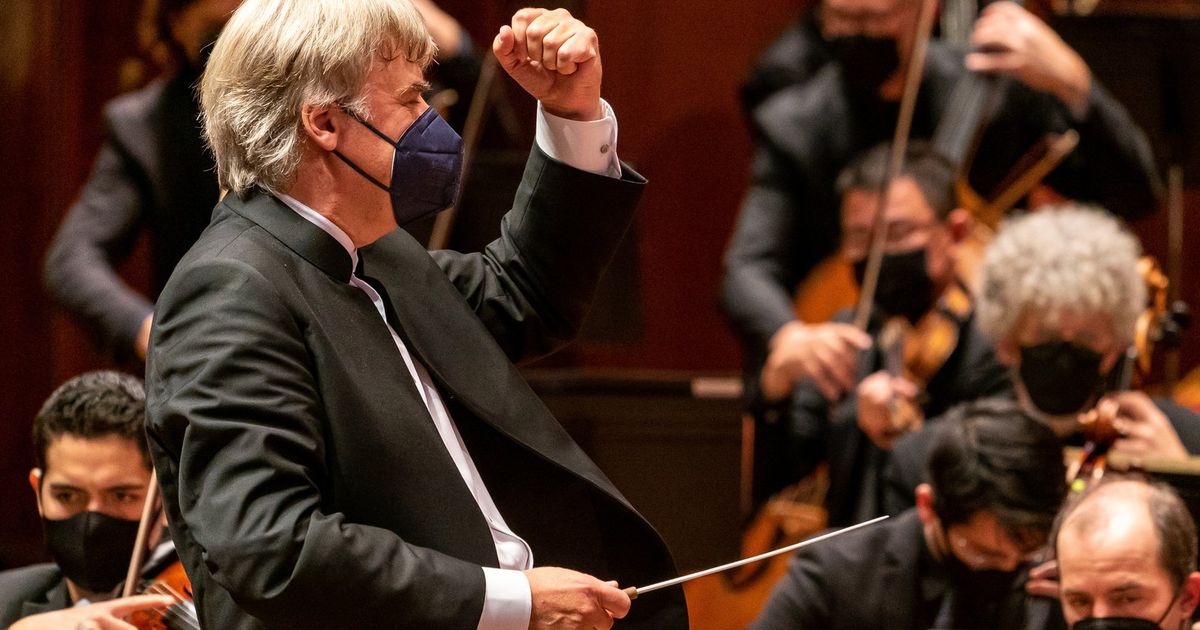


:quality(70)/cloudfront-us-east-1.images.arcpublishing.com/cmg/GLQND2AXQQO2G4O6Q7SICYRJ4A.jpg)




